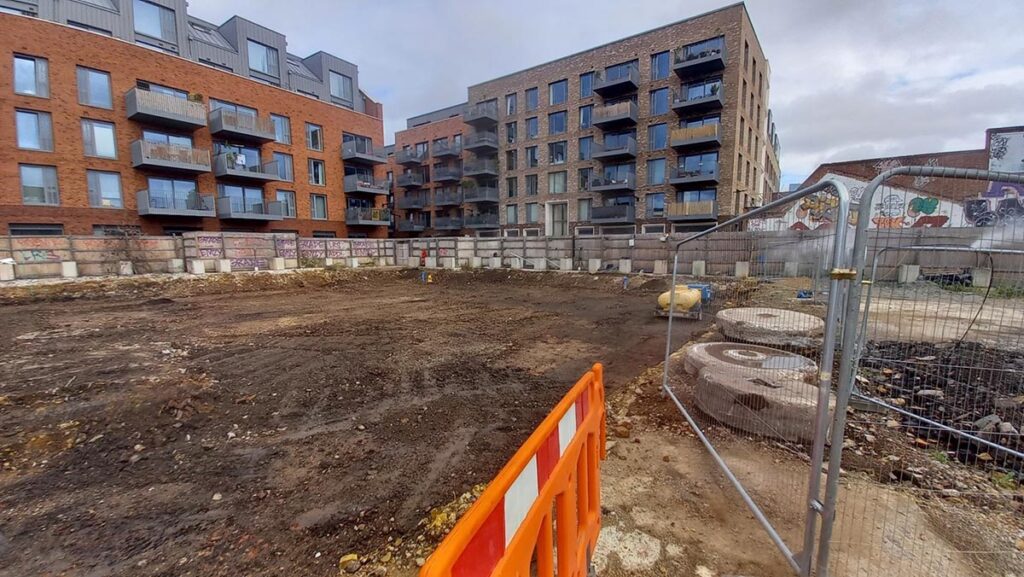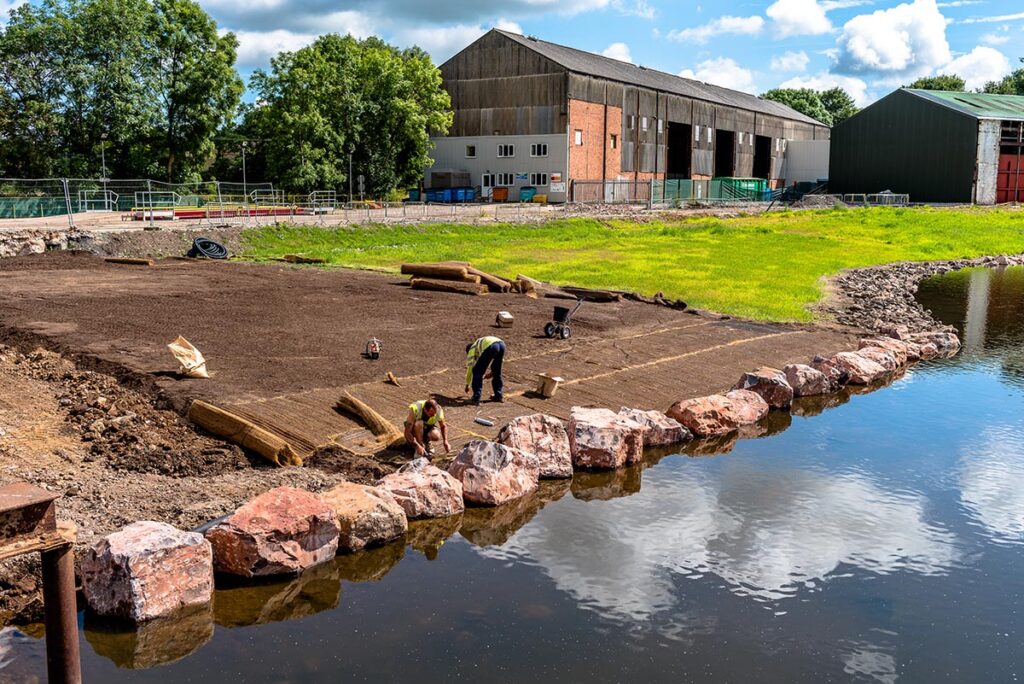Have you considered the untapped potential within brownfield sites? Often disregarded as risky and expensive to develop, these areas can provide significant economic benefits when planned carefully alongside the right experts.
Highlighting the Economic Benefits
The economic advantages of brownfield redevelopment are numerous and diverse. The creation of new homes is beneficial from a social perspective, as it can help address the ongoing housing crisis. Over 1.3 million new homes could be built through brownfield regeneration.
The local economy also benefits significantly from brownfield redevelopment. New homes and businesses attract people to the area, increasing local spending and, in turn, boosting the local economy.
Here’s a quick rundown of the economic benefits:
- Over 1 million new jobs
- More than 1.3 million new homes
- Boost to the local economy
Brownfield sites can represent an appealing investment opportunity for developers due to their relatively lower acquisition costs compared to greenfield sites. These previously developed lands, frequently situated in desirable urban locations, their prime locations make them especially attractive for redevelopment projects that aim to inject new life into urban areas.
One of the critical advantages of brownfield redevelopment is the potential for financial support from Government or Local Authorities. Various schemes and incentives are designed to encourage the regeneration of these sites, mitigating some of the financial risks associated with environmental cleanup and infrastructure improvements. Grants, tax incentives, and funding programs can substantially reduce the initial costs, making projects more economically viable.

Brownfield Redevelopment: A Solution for Housing Targets
The UK government has set an ambitious housing target of 250,000 new homes a year. Given the current housing crisis, achieving this target is of utmost importance. However, with limited space available for new developments, brownfield sites might be the answer.
Redeveloping these areas makes practical sense. It’s also a sustainable solution that can help meet the housing target. These sites are often located in urban areas, where the demand for housing is high. By focusing on brownfield redevelopment, we can create new homes in areas where people want to live, all while contributing to the government’s housing target.
Furthermore, the strategic utilisation of brownfield sites for housing development not only aids in meeting government targets but also helps in preserving greenfield spaces, which are crucial for environmental sustainability and biodiversity.
The regeneration of brownfield areas can lead to the revitalisation of derelict urban landscapes, transforming them into vibrant communities with a mix of residential, commercial, and recreational spaces.
This holistic approach to urban development also supports sustainable transport options by taking advantage of existing infrastructure. With proper planning, brownfield redevelopment can contribute to creating walkable neighbourhoods that reduce reliance on cars, thereby decreasing traffic congestion and improving air quality.
Additionally, repurposing existing buildings on brownfield sites can lead to considerable cost benefits compared to new builds, whilst preserving valuable historical and architectural heritage.
The Environmental Impact and Sustainability of Brownfield Redevelopment
In addition to the economic benefits, brownfield redevelopment has significant environmental implications. One of the largest environmental advantages is the preservation of greenfield sites. By focusing on the redevelopment of already disturbed land, we can reduce the demand for greenfield sites, preserving these areas for future generations.
In addition, brownfield redevelopment often involves the remediation of contaminated sites. This process not only makes the land safe for future use but also removes potential sources of environmental pollution. In this way, brownfield redevelopment contributes to a cleaner, healthier environment.
Sustainability is another factor to consider. Brownfield sites are often located in urban areas with existing infrastructure. By redeveloping these areas, we can make better use of this infrastructure, reducing the need for new developments and, consequently, the consumption of resources.

Case Studies: Transforming Spaces, Transforming Economies
Across the UK, successful brownfield redevelopment projects serve as a testament to the potential of these initiatives. From the transformation of industrial sites in the North of England to the revitalization of docklands in urban centres, these projects not only provide much-needed housing and commercial space but also revitalise communities and stimulate economic growth.
The Holborn Regeneration Scheme on the River Tyne
The Holborn Regeneration Scheme in South Tyneside is a pivotal example of brownfield redevelopment in the UK. This ambitious project aims to transform a former industrial dockland on the south bank of the River Tyne into a vibrant, mixed-use waterfront district. The scheme highlights the economic, social, and environmental benefits of redeveloping brownfield sites within urban landscapes.
Revitalising the Local Economy and Community
The Holborn project is set to inject new life into the area, bringing with it significant economic opportunities. By creating a new residential quarter alongside commercial and leisure facilities, the scheme will not only generate jobs but also stimulate local business growth. This redevelopment effort is anticipated to enhance the overall attractiveness of South Tyneside as a place to live, work, and visit.
Infrastructure and Sustainable Development
Key to the Holborn scheme is the focus on sustainable urban development. Plans include the construction of energy-efficient buildings and the integration of green spaces, aimed at promoting environmental sustainability. Additionally, improvements to local infrastructure and transport links are expected to enhance connectivity with the wider region, further boosting the scheme’s economic impact.
Heritage and Environmental Considerations
A noteworthy aspect of the Holborn Regeneration Scheme is its commitment to preserving the historical and architectural significance of the area. By incorporating the adaptive reuse of existing structures, the project respects the site’s industrial heritage while embracing modern development principles. Moreover, the scheme includes measures to address environmental issues such as land contamination and flooding, ensuring a resilient future for development.
A Model for Future Brownfield Projects
The Holborn Regeneration Scheme serves as a compelling case study for the potential of brownfield redevelopment in the UK. By balancing economic development with environmental and community considerations, the project exemplifies how derelict sites can be transformed into thriving urban spaces. As such, it offers valuable insights and inspiration for other cities facing similar challenges with brownfield sites.

The Opportunity
Brownfield sites represent a significant financial opportunity, provided that it is managed with strategic acumen and foresight. With the potential to create over a million new jobs and more than 1.3 million new homes, the impact on the economy could be substantial.
These previously developed sites, often located in prime urban areas, offer the chance to reinvigorate and repurpose valuable land that might otherwise remain underutilised.
By navigating the complexities of remediation and redevelopment, developers can unlock considerable value, transforming these sites into vibrant residential, commercial, or mixed-use developments. This not only caters to the growing demand for urban space but also aligns with sustainable development goals by minimising greenfield sprawl.
However, the financial viability of brownfield redevelopment hinges on thorough due diligence, innovative planning, engaging with the best technical and delivery experts and effective stakeholder engagement. Identifying and mitigating environmental risks early, leveraging available government incentives, and implementing cost-effective remediation strategies can significantly reduce upfront costs and enhance project returns.